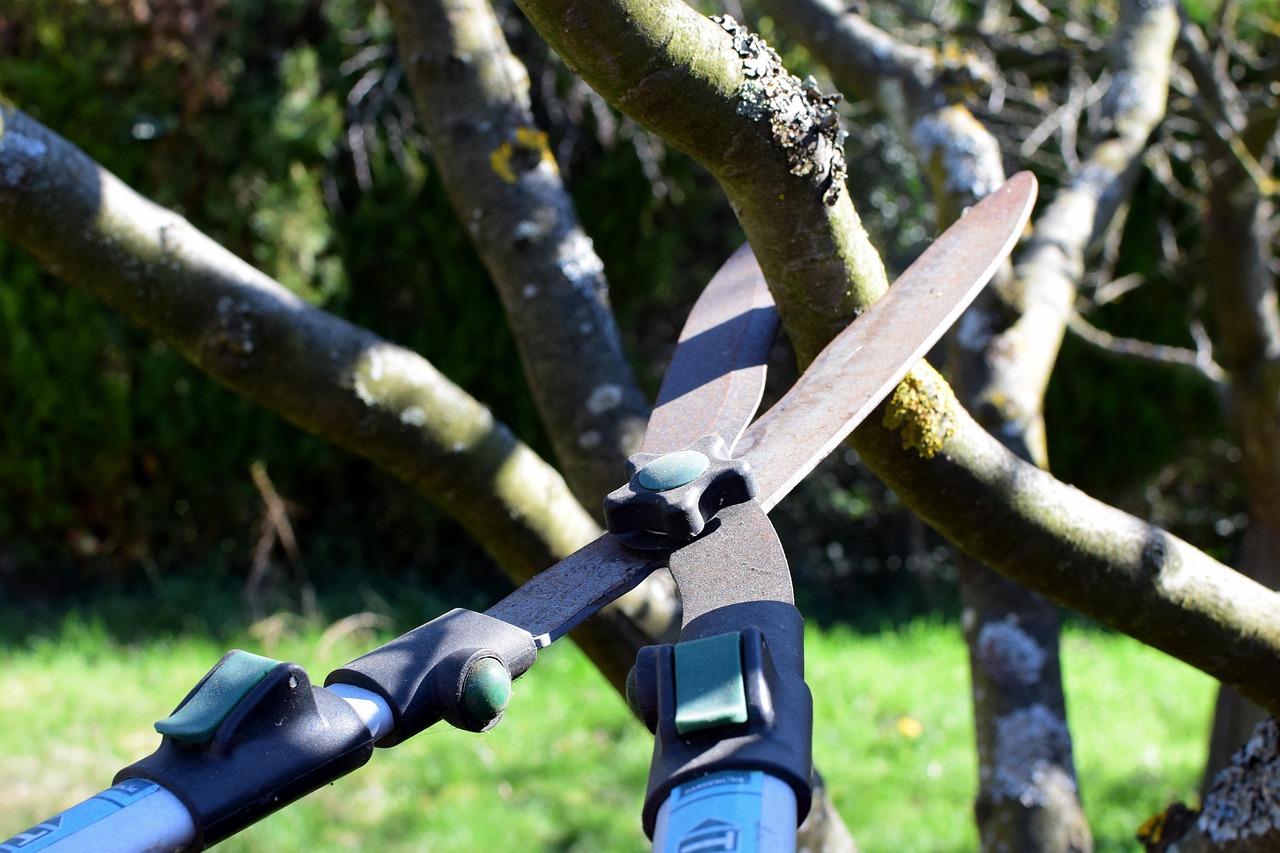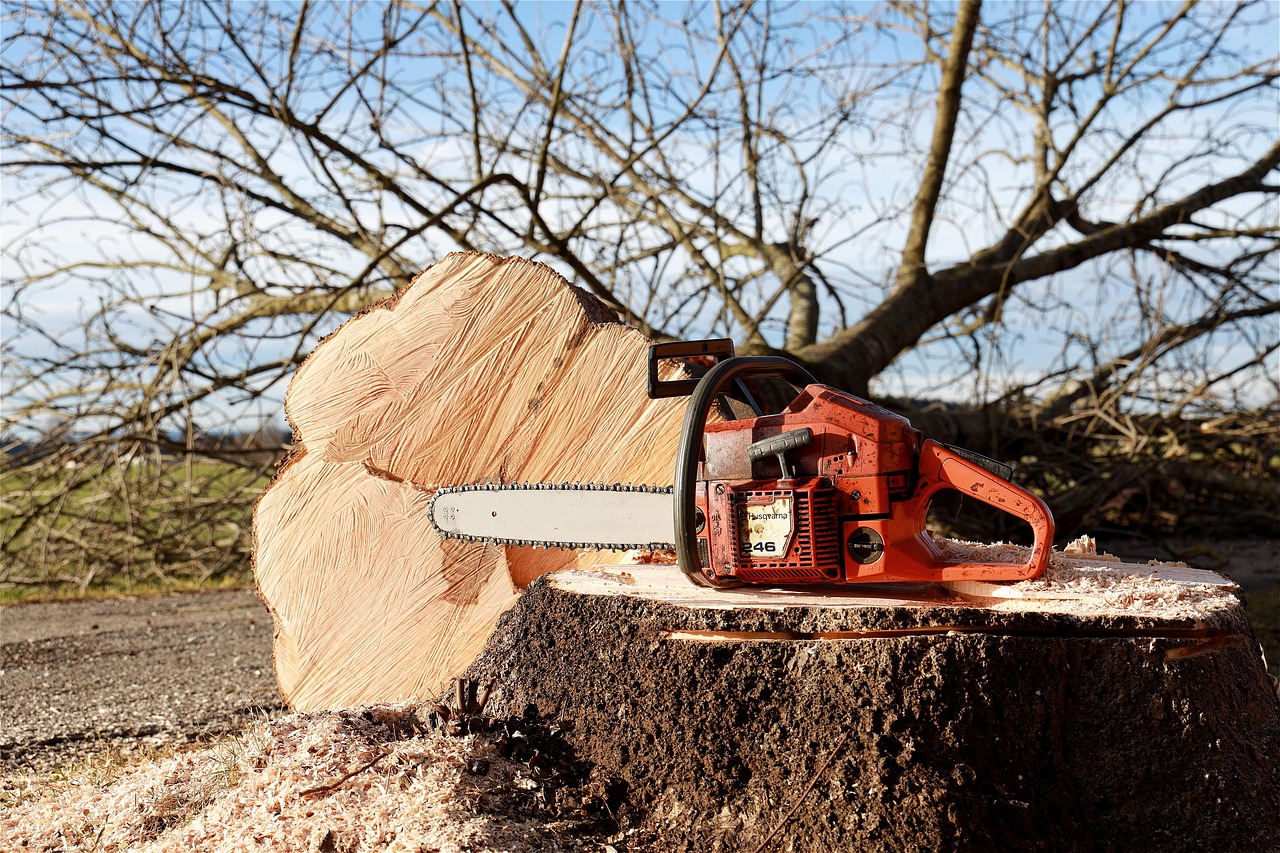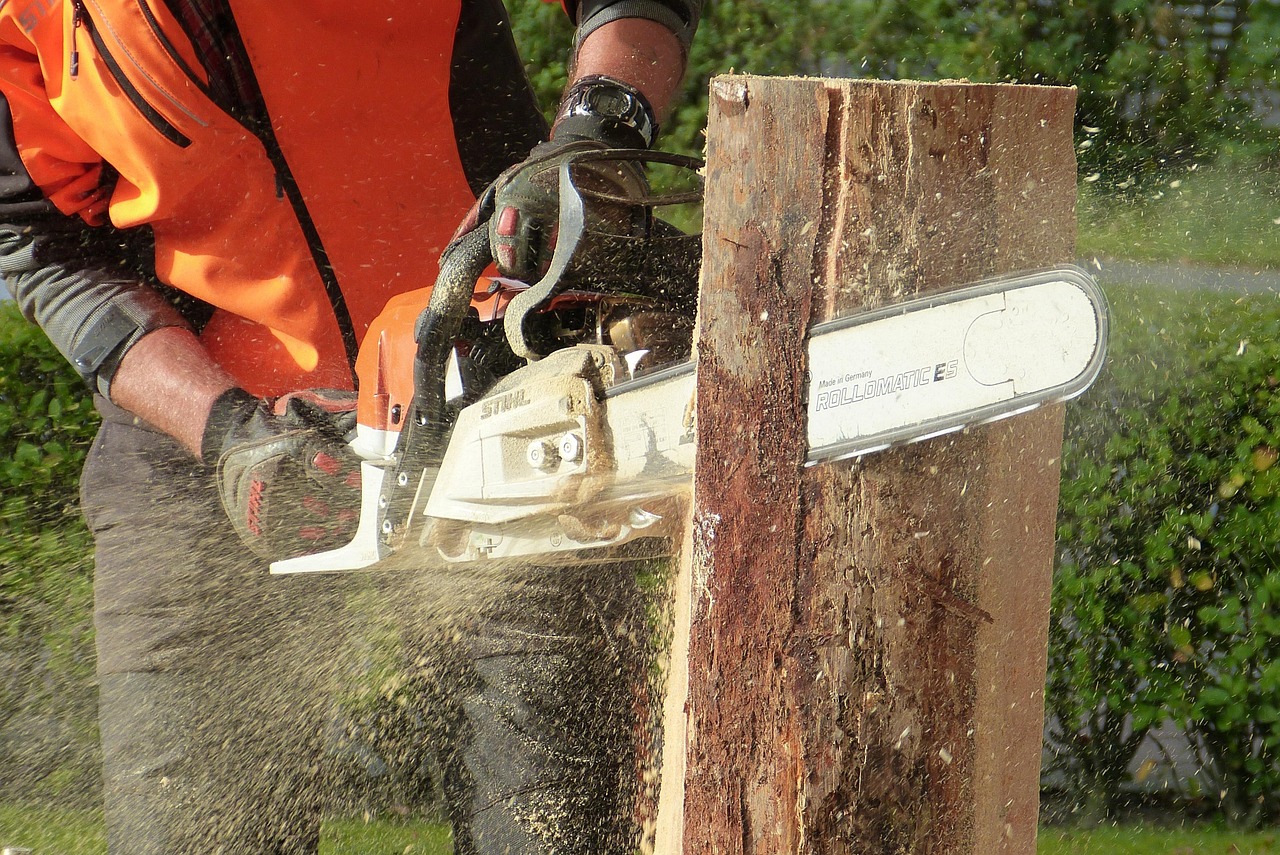Tree pruning wax is a protective sealant applied to fresh cuts on trees and shrubs. It helps prevent moisture loss, reduces the risk of disease, and protects the exposed area from pests, promoting better healing and overall plant health.
Pruning is an essential practice for maintaining the health and aesthetics of trees and shrubs. By removing dead or overgrown branches, gardeners can encourage new growth, improve air circulation, and enhance the plant’s overall appearance. However, pruning can leave open wounds that may be susceptible to environmental stressors, pests, and diseases. This is where tree pruning wax comes into play.

Tree pruning wax serves as a barrier against harmful elements that can enter through fresh cuts. Applying wax after making a cut not only seals the wound but also aids in the healing process. This is particularly important for larger cuts, where the exposed tissue is more vulnerable.
Benefits of Using Tree Pruning Wax
There are several advantages to using tree pruning wax on fresh cuts. Here are some key benefits:
- Prevention of Moisture Loss: Fresh cuts can lose moisture quickly, leading to desiccation. Pruning wax helps retain moisture at the site of the cut.
- Protection Against Pests: The wax creates a physical barrier that deters insects and other pests from accessing the wound.
- Reduction of Disease Risk: By sealing the cut, the wax minimizes exposure to pathogens and diseases that can infect the tree.
- Aid in Healing: The use of wax can promote faster healing and recovery for the pruned area.
Many gardeners find that using tree pruning wax improves the overall health of their plants. It is particularly beneficial for specific tree species that are prone to infection or damage after pruning.

Types of Tree Pruning Wax
Tree pruning wax comes in various formulations. Understanding these types can help you choose the right one for your gardening needs. Some common types include:
| Type of Wax | Description | Best Use |
|---|---|---|
| Paraffin Wax | A petroleum-based wax that is durable and water-resistant. | Ideal for larger cuts on hardwood trees. |
| Beeswax | A natural wax that is softer and easier to apply. | Great for smaller cuts or delicate plants. |
| Commercial Pruning Sealer | A specially formulated product designed for sealing cuts. | Effective for various tree types and sizes. |
Selecting the right type of pruning wax depends on the specific needs of your trees and the size of the cuts you are making. Each type has its own advantages, and understanding these can help you make an informed decision.
How to Apply Tree Pruning Wax
The application process for tree pruning wax is straightforward. Here are some steps to follow:

- Choose the Right Time: It is best to prune trees during their dormant season, typically late winter or early spring.
- Make Clean Cuts: Use sharp pruning shears or saws to make clean, angled cuts. This helps minimize damage to the tree.
- Allow Cuts to Dry: Let the freshly cut areas dry for a short time before applying wax.
- Apply Wax: Use a brush or your fingers to apply a generous layer of wax over the cut area. Ensure complete coverage.
- Monitor the Area: Check the sealed areas periodically for signs of infection or decay after application.
By following these steps, you can effectively protect your trees from potential harm after pruning. Proper application of tree pruning wax can lead to healthier plants and more fruitful growth in the long run.
Considerations When Using Tree Pruning Wax
While tree pruning wax offers many benefits, there are also some considerations to keep in mind:
- Avoid Overuse: Excessive application can trap moisture and lead to decay instead of preventing it.
- Choose Quality Products: Not all products are created equal. Ensure you select high-quality sealing wax that will provide adequate protection.
- Know Your Tree Species: Some trees may not require sealing after pruning. Research your specific tree species to understand their needs better.
Understanding these considerations will help you use tree pruning wax effectively while ensuring the health of your plants. By being informed about proper use and applications, you can enhance your gardening practices significantly.

Common Mistakes When Using Tree Pruning Wax
While tree pruning wax can offer numerous benefits, improper use may lead to adverse effects. Here are some common mistakes to avoid:
- Applying Wax Too Soon: If you apply wax immediately after making a cut, it may trap moisture and inhibit the natural healing process. Allow the cut to dry for a brief period before sealing.
- Using the Wrong Wax: Different types of trees and cuts may require specific wax formulations. Using the wrong type can reduce the effectiveness of the seal.
- Neglecting Wound Care: Pruning wax is not a substitute for proper pruning techniques. Neglecting to make clean cuts can compromise the healing process.
- Ignoring Environmental Conditions: High humidity or wet conditions can affect how well the wax adheres and works. Be mindful of the weather when applying wax.
When Is the Best Time to Prune Trees?
The timing of tree pruning is crucial for ensuring optimal health and growth. Generally, the best time to prune varies based on the tree species and local climate conditions. Here are some guidelines:
- Late Winter to Early Spring: Many trees are best pruned during their dormant season. This helps minimize stress and promotes vigorous growth in spring.
- After Blooming: For flowering trees, consider pruning after the blooming period. This ensures you do not remove buds that will produce flowers.
- Avoid Pruning in Fall: Pruning in the fall can stimulate new growth that may not harden off before winter. This leaves trees vulnerable to cold damage.
By adhering to these timing guidelines, you can maximize the effectiveness of your pruning efforts and improve the overall health of your trees.
Alternative Sealing Options
While tree pruning wax is widely used, there are alternative products available for sealing fresh cuts. Each option has its own benefits and drawbacks:
| Sealing Option | Description | Advantages | Disadvantages |
|---|---|---|---|
| Tree Paint | A latex-based paint designed for sealing cuts. | Provides a waterproof barrier; easy to apply. | May not adhere well to all surfaces; can peel off. |
| Shellac | A natural resin that forms a hard protective coating. | Non-toxic; good air permeability. | Can be difficult to apply evenly; dries quickly. |
| Natural Oils | Soybean or linseed oils used as sealants. | Biodgradable; nourishes the cut area. | Less effective than wax or paint at creating a barrier. |
Choosing an alternative sealing option depends on your gardening philosophy and the specific needs of your trees. Consider factors such as application ease, environmental impact, and personal preference when making your selection.
Specific Tree Species Considerations
Certain tree species have specific needs when it comes to pruning and sealing. Here are some considerations for popular tree types:
- Fruit Trees: These trees benefit from timely pruning and sealing. Proper sealing helps prevent disease and encourages healthy fruit production.
- Evergreens: For coniferous trees, avoid sealing smaller cuts as they can heal naturally without intervention. Reserve waxing for larger, more significant wounds.
- Deciduous Trees: These trees typically respond well to pruning during dormancy. Sealing larger cuts can help prevent diseases like oak wilt.
Understanding the specific needs of different tree species will enhance your gardening practices, ensuring that you provide appropriate care while minimizing risks associated with pruning.
Environmental Impact of Tree Pruning Wax
The use of tree pruning wax also raises questions about environmental sustainability. It is essential to consider both the impact of the products used and how they affect the ecosystem:
- Biodegradability: Many commercial tree pruning waxes contain synthetic materials that may not break down easily in the environment. Choosing biodegradable options can help mitigate this issue.
- Toxicity: Some waxes contain chemicals that can be harmful to beneficial insects or soil health. Opt for natural products whenever possible to reduce toxicity levels.
- Sourcing: Consider where materials for tree pruning wax are sourced from. Sustainable practices in product manufacturing contribute positively to environmental health.
Being aware of the environmental impact of tree pruning wax can guide you towards more sustainable gardening practices, ensuring a healthier ecosystem for both plants and wildlife.
How Tree Pruning Wax Affects Plant Health
Understanding the role of tree pruning wax in promoting plant health is crucial for gardeners and landscapers. Proper application can significantly influence a tree’s recovery and resilience. The following factors highlight how pruning wax contributes to overall plant health:
- Wound Protection: By sealing cuts, the wax prevents external pathogens from entering the plant. This minimizes the risk of infections that could compromise the tree’s health.
- Moisture Retention: The wax helps retain moisture at the site of the cut, which is vital for cellular repair and regrowth. This is especially important during dry seasons.
- Growth Stimulation: Protected wounds can heal more quickly, allowing the tree to redirect energy towards new growth rather than recovery from damage.
- Reduced Stress: By minimizing exposure to environmental stressors, such as extreme temperatures or harmful insects, pruning wax helps trees maintain their vitality.
Signs of Successful Healing After Pruning
After applying tree pruning wax, it is essential to monitor the pruned areas for signs of successful healing. Here are some indicators to look for:
- New Growth: Look for the emergence of fresh leaves or buds around the cut area. This indicates that the tree is recovering well.
- Sealed Edges: The edges of the cut should appear smooth and sealed with the wax. This suggests that moisture is being retained effectively.
- No Signs of Decay: Check for any discoloration or softening of the wood around the cut. Healthy tissue should remain firm and show no signs of rot.
- Pest Absence: A lack of insect activity around the pruned area indicates that the wax is functioning as a protective barrier.
By observing these signs, you can determine whether your pruning techniques and sealing methods are effective in promoting healthy tree growth.
Seasonal Considerations for Applying Tree Pruning Wax
The effectiveness of tree pruning wax may vary seasonally. Understanding these seasonal impacts can enhance your pruning strategies:
- Spring: As trees begin to grow, this is an excellent time for pruning. Ensure you apply wax promptly after cuts to protect new growth.
- Summer: During this season, trees are actively growing, making it more critical to seal cuts immediately to prevent infections.
- Fall: Pruning in the fall can be risky as new growth may not harden before winter. If you prune, consider using wax to protect cuts from winter conditions.
- Winter: While trees are dormant, this is often a safe time for pruning. However, be cautious with wax application if temperatures are extremely low.
By aligning your pruning practices with seasonal trends, you can ensure that your trees receive optimal care throughout the year.
Effects of Tree Pruning Wax on Different Tree Types
The effects of tree pruning wax can differ based on tree species. Here are some insights into how various trees respond to pruning and sealing:
| Tree Type | Response to Pruning Wax | Recommended Practices |
|---|---|---|
| Deciduous Trees | Generally benefit from sealing larger cuts. | Use wax on cuts larger than one inch; prune during dormancy. |
| Coniferous Trees | Tend to heal naturally without wax on smaller cuts. | Avoid sealing small cuts; use wax for significant wounds only. |
| Fruit Trees | Greatly benefit from sealing cuts to prevent diseases. | Seal all cuts after pruning; apply during late winter or early spring. |
This understanding allows you to tailor your pruning and sealing practices based on the specific needs of different tree types, thus enhancing their health and growth potential.
The Role of Tree Pruning Wax in Pest Management
Pest management is a critical aspect of maintaining healthy trees. Tree pruning wax plays a vital role in reducing pest-related issues through several mechanisms:
- Barrier Against Insects: The wax creates a physical barrier that deters pests from accessing open wounds.
- Discouragement of Egg Laying: By sealing cuts, the wax prevents insects from laying eggs in vulnerable areas, reducing future infestations.
- Aiding Natural Defenses: Healthy trees can produce natural resins and compounds that further deter pests when protected by wax.
Incorporating tree pruning wax into your pest management strategy can enhance overall plant health and reduce reliance on chemical treatments.
Caring for Trees After Wax Application
After applying tree pruning wax, it is essential to continue caring for your trees properly. Here are some post-application care tips:
- Monitor Moisture Levels: Ensure that trees receive adequate water, especially during dry periods, to promote healing and growth.
- Avoid Excessive Fertilization: While nutrients are important, excessive fertilization can stress newly pruned trees. Maintain a balanced fertilization schedule.
- Check for Signs of Stress: Regularly inspect trees for signs of stress or disease, especially around pruned areas.
- Create a Healthy Environment: Maintain good soil health, proper sunlight exposure, and adequate air circulation to support overall tree well-being.
Caring for your trees after applying pruning wax not only enhances their recovery but also promotes long-term health and vitality.
Additional Tips for Effective Pruning and Sealing
In addition to the care tips previously mentioned, there are several other strategies that can enhance the effectiveness of tree pruning wax and overall tree maintenance:
- Use Proper Tools: Always use clean, sharp tools for pruning. This reduces damage to the tree and makes for cleaner cuts that heal better.
- Prune at the Correct Angle: Make angled cuts to promote water runoff. This helps prevent moisture from pooling on the cut surface, reducing the risk of rot.
- Limit Pruning Severity: Avoid removing more than 25% of a tree’s canopy in a single season. Excessive pruning can stress trees and hinder recovery.
- Apply Wax Generously: Ensure that you cover the entire cut area with wax. Adequate coverage is essential for effective sealing and protection.
The Importance of Education and Resources
Continued education about tree care is vital for anyone involved in gardening or landscaping. Resources such as local horticultural societies, extension services, and online gardening forums can provide valuable information and support. These resources can help you:
- Stay Informed: Learn about the latest practices in tree care and pest management.
- Connect with Experts: Reach out to arborists or experienced gardeners for advice on specific tree species or issues you may face.
- Access Workshops: Participate in workshops or classes focusing on pruning techniques and tree health.
Investing time in education not only enhances your skills but also contributes to the overall health of local ecosystems.
Understanding Tree Biology
A deeper understanding of tree biology can significantly enhance your approach to pruning and sealing. Recognizing how trees grow and heal can inform your practices:
- Cambium Layer: This is the layer of actively dividing cells just beneath the bark. Protecting this layer during pruning is crucial for healing.
- Callus Formation: After a cut, trees form a callus to protect the wound. Proper sealing helps this process by minimizing exposure to pathogens.
- Photosynthesis Impact: Leaves play a vital role in photosynthesis, which provides energy for growth. Pruning should be done thoughtfully to preserve as many leaves as possible.
By understanding these biological processes, you can make more informed decisions about when and how to prune trees effectively.
Final Thoughts
Tree pruning wax is an invaluable tool for gardeners and landscapers dedicated to maintaining healthy trees. By sealing fresh cuts, it protects against moisture loss, pests, and diseases, allowing trees to heal effectively. Understanding the best practices for applying wax, along with recognizing the unique needs of different tree species, enhances your ability to care for your plants.
As you implement these strategies, remember that ongoing education and awareness of environmental impacts contribute to sustainable gardening practices. With careful attention to detail, you can foster healthy trees that thrive for years to come.
Investing in proper tree care not only ensures the longevity of your plants but also enriches the environment around you. A well-maintained tree canopy contributes to biodiversity, provides shade, and enhances the beauty of landscapes. By using tree pruning wax thoughtfully and responsibly, you take significant steps toward cultivating thriving ecosystems.
Ultimately, the journey of nurturing trees is both rewarding and essential for our environment. Embrace these practices, stay informed, and watch as your efforts lead to flourishing trees that stand as a testament to your dedication to plant health.
